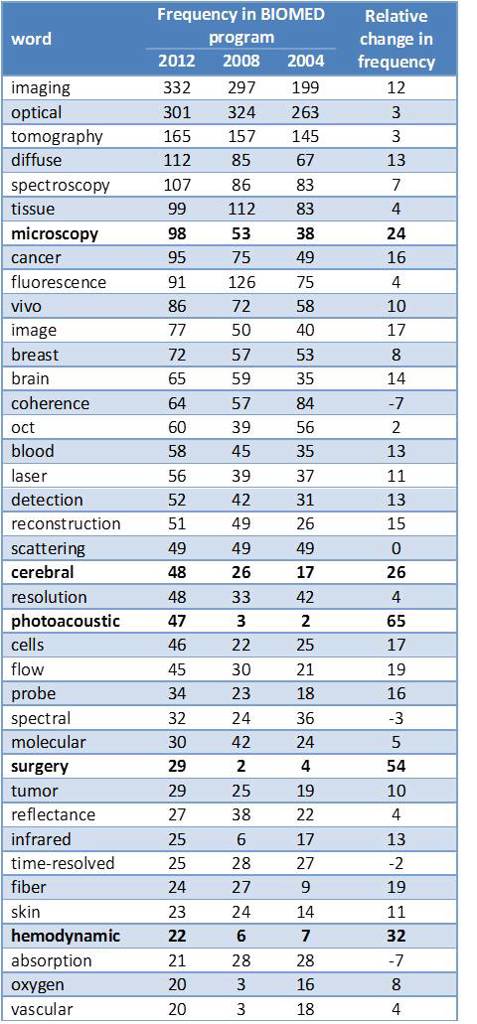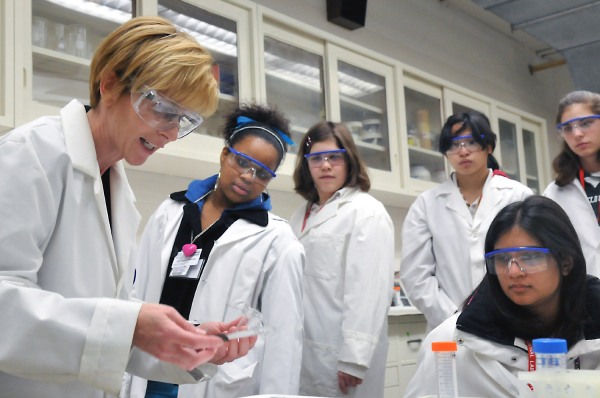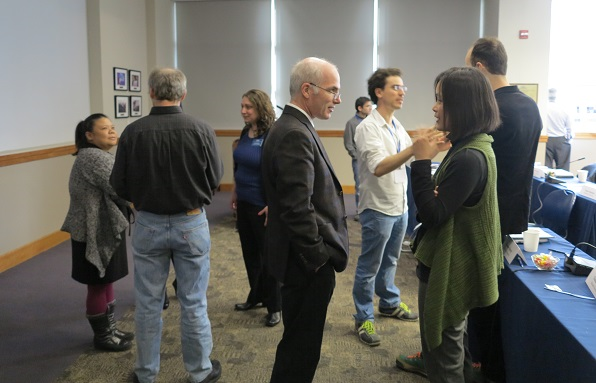March 2014
Salt and Pepper (Noise): Key Ingredients for Imaging Blood Flow
We’ve all experienced that “salt-and-pepper”, or white noise when our favorite television show cuts out on us. Well it turns out that similar “speckle” patterns are also seen when projecting laser light onto biological tissue, owing to interference patterns of the monochromatic light source. Now you might say, “so what!” and that’s probably...
Added: 25 March 2014
A Woman's Place is in the Lab
As a female engineer, one becomes accustomed to being a minority: in the lecture theatre, in the graduate lab and in the workplace. We have come a long way from the days when women scientists were an anomaly, but the number of women choosing STEM courses and careers at the undergraduate and graduate level still lags behind our male counterparts. But to grow...
Added: 24 March 2014
Day 1 continued: Learning to See Through Walls
Is it possible to look inside an object using only light reflected off the front? Can you transmit more light through an attenuating medium by making it even thicker? Could a bank verify your identity using the pattern of light scattered off your teeth?
Added: 07 March 2014
Day 2: Propagating Further
After a final session of talks on new developments in 3D imaging methods and funding opportunities, our host Jerome Mertz presented a timely summary of outstanding problems and possible solutions identified during this week's Incubator meeting:
Added: 07 March 2014
Day 1: Seeing Order in Disorder
Greetings from Washington, DC, and the OSA Controlled Light Propagation Incubator meeting! Hosted by Tom Bifano and Jerome Mertz, Boston University, USA; Sylvain Gigan, Institut Langevin, France; and Allard Mosk, University of Twente, Netherlands; today’s event brings leading researchers from the fields of biological imaging and adaptive optics together with partners from industry and...
Added: 06 March 2014
Reducing Drug Trial Costs with Imaging Technology
95% of new cancer therapeutics fail to make it past Phase II clinical trials. This means that while it should only cost about $50 million per drug for FDA approval, incorporating the cost of failures leads to an estimated cost of $1 billion per drug (1), with a recent Forbes article suggesting that this number is considerably higher (...
Added: 04 March 2014






